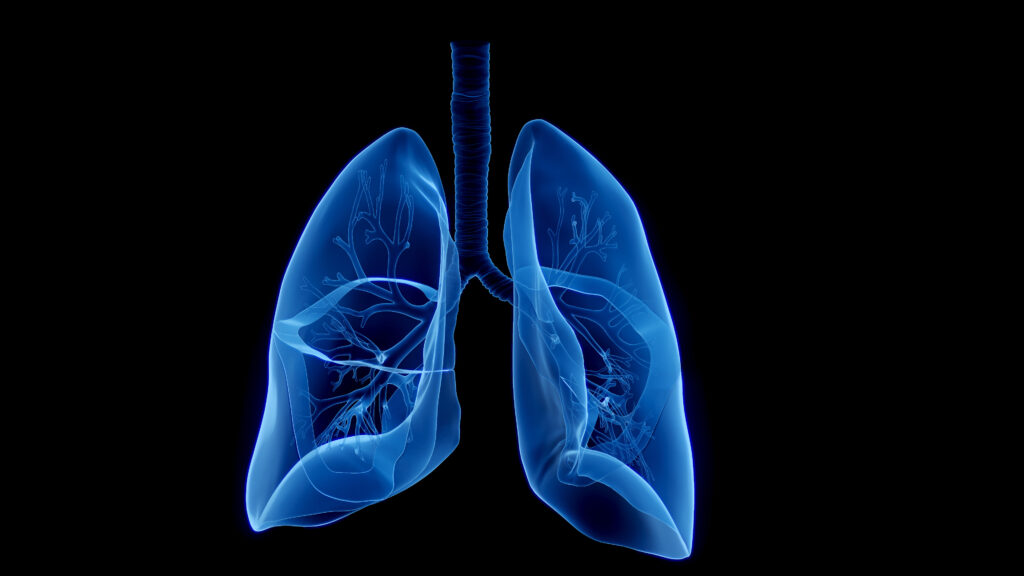Since the 1980s, however, there have been major shifts in the incidence rates by histologic type that gradually diminish male/female differences in histology. Among men, the incidence rates of squamous cell carcinoma and small cell carcinoma have decreased, while the incidence rate of adenocarcinoma has steadily increased and has even surpassed squamous cell carcinoma in several populations. Among women, the incidence rate for all three types have been rising recently, most rapidly for adenocarcinoma. Each histologic cell type is associated with smoking; however, historically, the strength of the association has been weaker with adenocarcinoma. The explanation for these changes is most likely related to smoking behaviour and changes in the composition of the cigarette, with the introduction of ‘light’ or ‘mild’ cigarettes, for example, and the use of filter cigarettes. Smokers of filtered, low-tar cigarettes are likely to inhale more deeply, resulting in carcinogen depositions more peripherally, and thus giving rise to adenocarcinoma.
The management of lung cancer patients has recently undergone major changes and is getting more and more complex, with increasing use of multidisciplinary approaches, depending on the stage of the disease at the time of diagnosis. Lung cancer staging is specifically related to the extent of the primary tumour and to the locoregional lymph node or more distant structures according to the TNM (tumour-node-metastasis) classification. Correct staging provides prognostic information, and surgery is indicated in this group of patients followed by adjuvant cisplatin-based chemotherapy. The results of several recent trials, including meta-analysis, have led to the conclusion that chemotherapy after complete resection of non-small cell lung cancer (NSCLC) should be considered the new standard of care in patients with good performance status. The patients should receive four cycles of chemotherapy, starting four to eight weeks after surgery.
For patients with inoperable stage III disease, the standard of care continues to be concurrent chemotherapy and radiotherapy, but the optimal means to combine these modalities and whether there is a benefit of additional chemotherapy/ radiotherapy remains open. Important areas of on-going research in radiotherapy include the roles of three-dimensional (3-D) conformal radiotherapy, intensity-modulated radiotherapy (IMRT), hyperfractionated radiotherapy, and the addition of targeted agents, with several of the latter demonstrating radiosensitisation. In patients with advanced disease (stage IIIb with pleural effusion and stage IV), doublet chemotherapy has been shown in multiple randomised studies to improve survival and quality of life, and it remains the standard of care. Several randomised trials have been performed during the last decade in order to identify the best platinum-based regimen; no major differences have been observed with respect to efficacy – only with regard to toxicity and cost. Recent randomised trials, including a non-platinum regimen, have shown that such regimens remain equivalent in efficacy to platinum-regimens, and in some studies with a more favourable toxicity profile. Controversy continues over the number of cycles of chemotherapy to be administered in the first-line setting, but there is now an accumulation of data indicating that three to four cycles are sufficient. Although numerous phase II cytotoxic regimens have been evaluated, none has produced amazing results. The major focus has, therefore, switched to targeted therapies.
A variety of targeted agents are currently being evaluated. Among these, the most promising are the epidermoid growth factor receptor (EGFR) inhibitors, erlotinib (Tarceva®) and gefitinib (Iressa®), and a monoclonal antibody against the vascular endothelial growth factor receptor (VEGFR), bevacizumab (Avastin®). Among these, gefitinib and erlotinib have been approved by health authorities in various countries as second- or thirdline treatment for non-small cell lung cancer patients resistant to conventional combination chemotherapy, while Avastin® has been approved in some countries combined with platinum-based chemotherapy consisting of paclitaxel and carboplatin in the initial treatment of patients with advanced disease. A number of molecular studies – including the use of immunohistochemistry and FISH (fluorescence in situ hybridisation) analysis on tumour tissue to determine EGFRs, including gene mutation analysis – continue in order to make it possible to determine the clinical likelihood of achieving response with these new targeted agents in the individual patient. All of these three agents have a better toxicity profile than classical cytostatic agents and, furthermore, two of the agents (Tarceva® and Iressa®) can be given orally.
A host of targeted agents are at earlier stages of clinical evaluation, such as cyclo-oxygenase-2 (COX-2) inhibitors, the pre-apoptic inhibitor exisulind, proteasome inhibitors, bexarotene (Targretin®) and vaccines.
Altogether, the management of non-small cell lung cancer is at present undergoing major changes, resulting in increased therapeutic options for the patients. We are thus entering an extremely exciting period in lung cancer research and our understanding, resulting in a growing number of pharmacologic agents targeting different molecular mechanisms of lung cancer. These agents offer great opportunities for translational research, which is expected to shed light not only on new mechanisms involved in advanced lung cancer, but also on those involved in early carcinogenesis. Combinations of different targeted agents, eventually combined with conventional therapeutic modalities, have the potential to improve the prognosis of lung cancer patients in the next few years.















